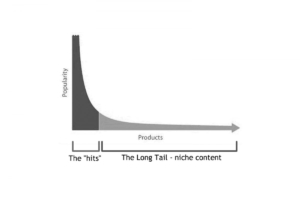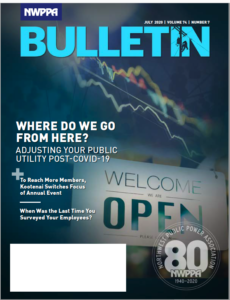Remember when you used to go to the mall to shop for the latest fashion threads at H&M? Or try on a pair of fly Nikes at Foot Locker? Or sip on a smoothie at Orange Julius? It seems so long ago, but that reality was only a year ago for most of us. This normal shopping behavior was a mainstream and almost national pastime. But, due in part to Covid-19, what we remember as shopping is almost an afterthought. Many brick and mortar stores have had to close shop and move online or close their doors. But, are shifts in consumer buying patterns due to Covid-19? Or did it merely accelerate where consumers were moving? No matter what you believe, it’s caused a few new trends to pop up, including:
- How we purchase day-to-day items
- The shifting of purchasing behaviors
- New business models and opportunities for retailers
The end result means big implications to both consumers and businesses
Put My Box into a Box: Packaging Trends
 Whether you’re an online novice or a super-shopper, in the past year many consumers have had to shift to online. With this trending north, Amazon Prime and many other online shippers will be sending your boxes within their boxes. This may be for protection, branding, or simply consolidating goods together. But it has led to an abundance of cardboard in your garage or office. Whether it’s stacked miles high in landfills or at recycling facilities, the use of excessive cardboard is just one item. Don’t forget the bubble wrap, styrofoam or natural peanuts, air pouches, and the like.
Whether you’re an online novice or a super-shopper, in the past year many consumers have had to shift to online. With this trending north, Amazon Prime and many other online shippers will be sending your boxes within their boxes. This may be for protection, branding, or simply consolidating goods together. But it has led to an abundance of cardboard in your garage or office. Whether it’s stacked miles high in landfills or at recycling facilities, the use of excessive cardboard is just one item. Don’t forget the bubble wrap, styrofoam or natural peanuts, air pouches, and the like.
So, what will we do if online shopping continues to grow and become the norm? Reinventing packaging will be key if we want to be sustainable in this new online shopping world. Packaging and cardboard producers like WestRock, Georgia Pacific, and Sealed Air will need to rethink this problem. If they don’t, they may be given ultimatums by the Amazons of the world or get backlash from consumers. They will need to rethink how to make packaging more effective, less material-intensive, or more innovative. What will this look like moving forward?
Virtual Buying Insanity: Online Purchasing Trends
 With the move to online shopping and delivery, access to goods has increased exponentially. In addition, the shopping experience has changed to cater to individuals. Consumers now have more access to options and aren’t limited to geography. As a result, traditional and big businesses will see increased competition in the form of more niche offerings. Both consumers and businesses will either benefit or find challenges associated with the effect which we call the Long Tail.
With the move to online shopping and delivery, access to goods has increased exponentially. In addition, the shopping experience has changed to cater to individuals. Consumers now have more access to options and aren’t limited to geography. As a result, traditional and big businesses will see increased competition in the form of more niche offerings. Both consumers and businesses will either benefit or find challenges associated with the effect which we call the Long Tail.
So, what’s the Long Tail? In statistics and business, you look for a large concentrated distribution where you get bang for your buck. The Long Tail is the antithesis of this large distribution. It’s the portion of the distribution having many occurrences far from the “head” or central part of the distribution.
So, what does that mean in an online world? It means a potential of limitless options for creating, marketing, and selling goods. If you’re asking how do you play this new game and how do you win, we recommend data. Yes, data. The gathering of data, real-time analysis, and implementation will be key for businesses to be online. It will help them develop new ways to attract and stay connected with consumers. It will also help to create one-of-a-kind online experiences and innovative solutions. Those who find a way to crack this nut will be the most successful.
Moving On Up to the Online: Business Model Trends
 The effect of Covid has forced consumers to behave differently. They cover their faces, practice social distancing, use contactless service, and stay at home. The result is reduced or nonexistent foot traffic at brick and mortar establishments. Whether it’s a restaurant, pet shop, larger retailer, or mom and pop shop, these businesses are being forced to adapt. They’re using new business models or practices and moving their business online or mobile. Models on the rise are:
The effect of Covid has forced consumers to behave differently. They cover their faces, practice social distancing, use contactless service, and stay at home. The result is reduced or nonexistent foot traffic at brick and mortar establishments. Whether it’s a restaurant, pet shop, larger retailer, or mom and pop shop, these businesses are being forced to adapt. They’re using new business models or practices and moving their business online or mobile. Models on the rise are:
- Improved direct to consumer pick-up. Delivery services for everything, ordering takeaway, or scheduled pickups through mobile apps.
- Online subscription. Automated and scheduled refill of items sent to homes, offices, or businesses.
- Curated and concierge online services. Based on personal preferences retailers are predictively providing solutions or catering to those needs in real-time.
- Trial and buy. Get sent your goods, try, and then buy or return to try again.
These are only a few models we are seeing in today’s online e-commerce world. Companies like PepsiCo are partnering with other food manufacturers and developing their own online stores. Nordstrom has taken their Nordstrom experience and transformed it into an online one. They allow you to view items in innovative ways, have live conversations with fashion experts, and extend returns if you don’t like your purchase. These are just a couple of companies taking advantage of these opportunities. And many more are shifting their business models to stay relevant with consumers and give options that cater to their new needs.
You Work Hard for the Money: Consumer Purchasing Trends
As the economy continues to suffer through the pandemic, consumers are feeling the impact. Some are losing jobs or their favorite businesses are closing their doors. And some have had funds diminish or have shifted how they use their hard-earned dollars. The result is that consumers are getting conservative with their purchase behaviors. They are more closely considering their purchase decisions or investments. They stay inside working in make-shift home offices and limiting face-to-face social interactions. This results in changing how consumers use their money for personal goods.
We are seeing a shift from buying externally viewed products to personal usage products. The purchase of luxury items was once seen by others. But flaunting riches is being replaced with the behavior of buying items of comfort. These items can come in the form of entertainment, physical and mental well-being, social connection, and pure pleasure. Consumers will move away from buying the newest line of Louis Vuitton handbags if no one will see them carrying the bag on the way to Starbucks. Instead, they’ll move to buy the Medical Breakthrough Massage Chair or ThermoSpas hot tub to rest from a hard day’s work in the home office. As time goes on, will consumers reevaluate their purchases or revert to old behaviors when it comes to “luxury” items?
Nice and Slow? Probably Not: These Trends Might Be Bigger and Faster
Were these consumer trends inevitable or was it a product of the pandemic? We can have this debate all day. But one thing that holds true is that they are probably here to stay. And these trends have changed how consumers buy and evaluate purchases. It will reimagine how we conduct business moving forward. Now it’s a matter of learning how to adapt, adjust accordingly, and continually track new consumer behaviors.


